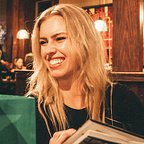Wikitongues Methodological Approaches to Documentation of Languages
In order to build inclusive knowledge in our societies, preserve cultural heritage, and mobilize political will to work towards global sustainable development, Wikitongues aims to attain documentation of every language in the world.
Currently our largest documentation output comes in the form of video recordings, referred to by linguists and archivists as oral histories. Our work does extend past this, into descriptive linguistics, where we create word lists, dictionaries, and grammar books, but a majority of our work is focused on primary data (video recordings) as this is the most accessible for everyone around the world to get involved with — you do not have to be a linguist to pick up a camera or phone and record a video speaking your language!
From a linguistic perspective, our task of documenting languages for research and preservation is comprised of two parts: first being the collection, and when possible, the transcription and/or translation of the primary data (this work is known as documentary linguistics), followed by a low-level analysis of this data (known as descriptive linguistics). Although these lines are often blurred, we work to distinguish the differences so that the collections and presentations of our oral histories receive adequate theoretical and practical attention.
The language documentation format that Wikitongues implements is, to a researcher’s eye, uncompromisingly data-driven as we do not exclude any primary data from the submissions received or from the videos recorded by volunteers simply because it does not fit a given analytical format. This ensures that the data gathered, whether it be videos, word lists, or something else, is of potential use to a variety of parties (activists, language communities, teachers, etc).
We believe that when it comes to language awareness and diversity, all data is good data. For example, if someone from Cameroon sends in a brief recording of themselves speaking a language classified as “nearly extinct” and we share it in our archives and social media, then someone in Sweden sees the video, recognizes the language as one their grandmother grew up with, then shows it to their grandmother and has her record a longer video, leading to them getting in touch with each other…who knows what might blossom from these types of connections. And situations like this occur regularly within our organization and our network!
The way to achieve a global network, with these personal connections, is to keep our video requirements non-restrictive, in order for everyone to feel included. From a technological standpoint, we implement a data-driven format, yet we ensure to maintain our people-first approach. This makes certain that the recording is of potential use to a variety of parties, no matter what field or interest brings them over.
The main challenge in conducting our documentation this way is that natural dialogue, communicative events in linguistic terms, can be the most difficult to attain. In any form of interview and/or camera recording setting, no matter how loosely structured it is, the informant can feel some type of pressure. Asking interview questions can cause people to want to accommodate you as the “interviewee”, steering their responses and limiting what you are able to find.
At Wikitongues, our volunteers enter their recording sessions knowing this to be true, and we present our video histories with this information in mind. In attempts to combat the nerves of the interviewee, we stress the naturalness of the conversation, encouraging them to pretend they are talking to a friend.
We encourage our volunteers not to provide specific questions to be answered during the session, as that might hinder the natural ebb-and-flow of their dialogue. Rather, to help language consultants to feel at ease, we prompt volunteers to engage the consultant(s) in conversation about their language and culture before beginning the recording.
Other cultural aspects, including material items, arts and crafts, manual goods, and significant objects, have been historically deemed worthy for preservation; the concept of creating oral histories as a respected and useful linguistic research tool provides confirmation that linguistic practices and traditions in a given language community should likewise be preserved for posterity.
If you’d like to donate to support the work of Wikitongues or if you’d like to get to know our work, please visit wikitongues.org. To watch our oral histories, subscribe to our YouTube channel or visit wikitongues.org to submit a video.
